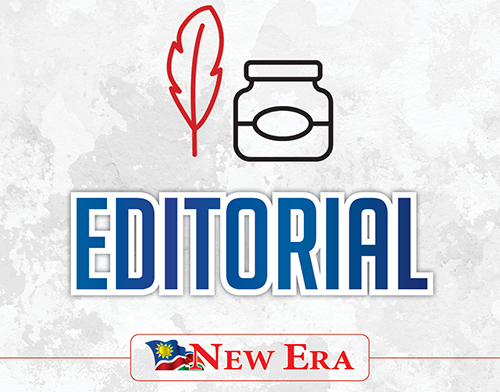Water is life. That fact cannot be stressed enough.
Access to clean water is a fundamental human right, and a critical aspect of public health and economic stability. In Namibia, like in many other countries, the provision of potable water faces significant challenges, exacerbated by factors such as drought and economic hardship. But ensuring access to clean water for both rural and urban communities remains a basic function of government.
As this paper reported this week, the challenges faced by residents in the Zambezi region, who could suffer water disconnection due to unpaid bills, highlight this pressing issue.
These disconnections stem from accumulated debts dating back to the Covid-19 pandemic-induced lockdown in 2020, when many communities were unable to sustain regular payments for water services.
During the pandemic, community water points were established by the government to ensure basic hygiene practices, providing a lifeline for many residents who relied on these points for their water needs. However, the suspension of billing during this period inadvertently led to a situation where residents became accustomed to free water access and subsequently accumulated substantial arrears when the billing resumed.
In areas like Sibbinda and parts of Linyanti constituencies, residents now face daunting bills exceeding N$400 000, accumulated over four years. This staggering amount not only underscores the financial strain on households but also reflects the broader challenge of maintaining water infrastructure in remote and economically disadvantaged areas.
The government, through the Ministry of Urban and Rural Development’s N$2.5 billion budget, allocated N$183 million to be paid to regional councils, local authorities and NamWater for costs incurred in the free water supplied to vulnerable groups of society during the pandemic.
NamWater shoulders the responsibility of managing and expanding this infrastructure, a task fraught with financial and logistical hurdles.
Its infrastructure includes dams, reservoirs, pipelines, and purification plants, all essential for ensuring water supply across Namibia. The cost of building and maintaining such infrastructure is substantial, yet NamWater endeavours to keep water tariffs affordable, currently averaging 1.5 cents per litre. This commitment to affordability is crucial for ensuring access, especially in rural areas where incomes are typically lower and access to alternative water sources is limited.
Despite these efforts, the publicly-funded company faces considerable financial strain, compounded by outstanding debts totalling over N$2.1 billion owed by town councils and individual consumers nationwide. This situation jeopardises the sustainability of water supply operations, maintenance of existing infrastructure, and the ambitious N$3.5 billion water infrastructure expansion programme planned over the next three years.
Ensuring continuous water supply to Namibians, both urban and rural, is not just a matter of convenience but a necessity for public health, food production, and economic development. In urban centres, reliable water supply supports industrial activities, commercial enterprises, and household sanitation, all of which contribute to economic growth and well-being. In rural areas, where agriculture is the cornerstone of livelihoods, access to water is pivotal for crop cultivation, livestock rearing, and sustaining community health.
Moreover, water scarcity exacerbates social inequalities, disproportionately affecting marginalised communities who lack the means to access alternative water sources or afford private water delivery services. Women and children, often responsible for fetching water in rural households, bear the brunt of water scarcity, spending hours each day walking long distances to access limited water sources.
Addressing these challenges requires a multifaceted approach involving government intervention, community engagement, and sustainable water management practices. It necessitates promoting water conservation, implementing efficient billing systems that consider local economic conditions, and investing in resilient water infrastructure capable of withstanding climatic variability.
While the challenges of providing water to Namibians during a persistent drought are formidable, they are not insurmountable.
NamWater’s insistence on recovering its pound of flesh despite communities and individuals still struggling post-Covid shows a lack of coordination of government’s functions and insensitivity of the conditions on the ground.
By prioritising investment in water infrastructure, promoting responsible water use practices, and ensuring equitable access for all citizens is the government’s responsibility. Making sure the government does its work is everyone’s responsibility.


